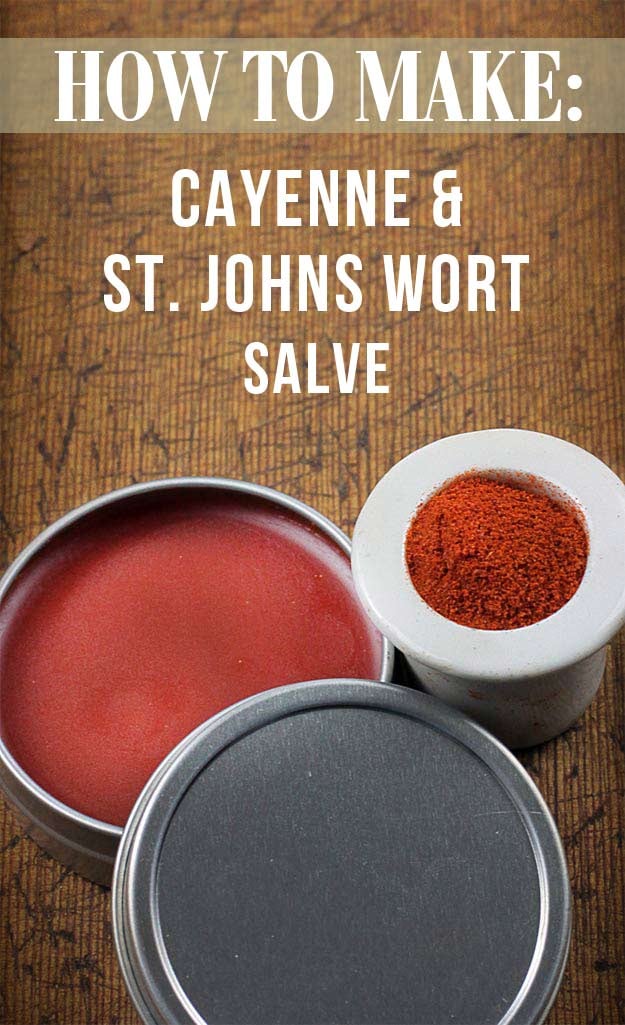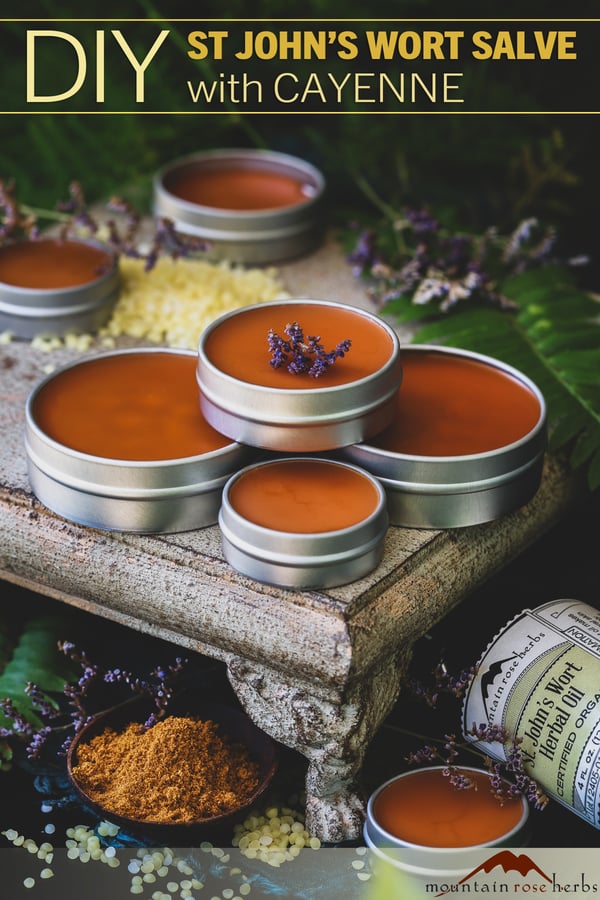
If I’m doing summer correctly—which is to say, getting out into the mountains and down to the river, hiking, swimming, and sucking up some of that vitamin D-boosting sunlight—I inevitably end up with bumps, bruises, and achy muscles from pushing the limits on how much fun I can pack into one season. I learned a long time ago to keep a tin of classic herbal muscle rub at the ready. This easy-to-make old-school salve brings together the muscle-supporting properties of St. John’s wort and the time-tested, warming qualities of capsaicin to ease the occasional aches and discomforts that come from living life to the fullest.
Bonus: this cayenne and St. John’s wort muscle rub isn’t just good for summer. It’s also an excellent choice for the achiness that comes from the chill of winter. Just keep some in your wellness cabinet and rub some salve into those achy muscles for a little sweet relief.
St. John’s Cayenne Salve Recipe
Ingredients
- 4 oz St. John’s wort infused oil
- 2 tsp organic cayenne powder
- 1/2 ounce beeswax or 2 Tbsp beeswax pastilles
Directions
- Combine the oil and cayenne powder in the top of a double boiler. Mix and warm very gently over low heat, making sure not to let the oil bubble, just until heated through.
- Allow to cool and then gently heat again in the top of a double boiler just until heated through. This double heating encourages more capsaicin to be released into the oil.
- Remove from heat, allow to cool, then cover and set aside to infuse at room temperature for 24 hours.
- After 24 hours, strain oil through several layers of cheesecloth or a coffee filter to remove cayenne powder.
- Place cayenne-infused oil and beeswax into the top of a double boiler and gently warm over low heat, stirring as necessary to thoroughly combine, just until the beeswax melts.
- Immediately pour into tins or glass jars and allow to cool completely before putting on lids.
- Label tins with contents and date made.
- Salves should be stored in a cool location where they will remain semi-solid.
Caution: Avoid broken skin with this salve and be careful not to rub your eyes, nose, or other mucus membranes before thoroughly washing your hands after application. The cayenne can have some lingering heat!
Want a Quick Tutorial on Vegan Salve Making?
Read Vegan Salve Making with Carnauba Wax!
You may also be interested in:
- How to Make Herb-Infused Oils for Culinary & Body Care Use
- DIY Gardener’s Salve Recipe
- Herb-Infused Kokum Butter Salve for Dry Skin












